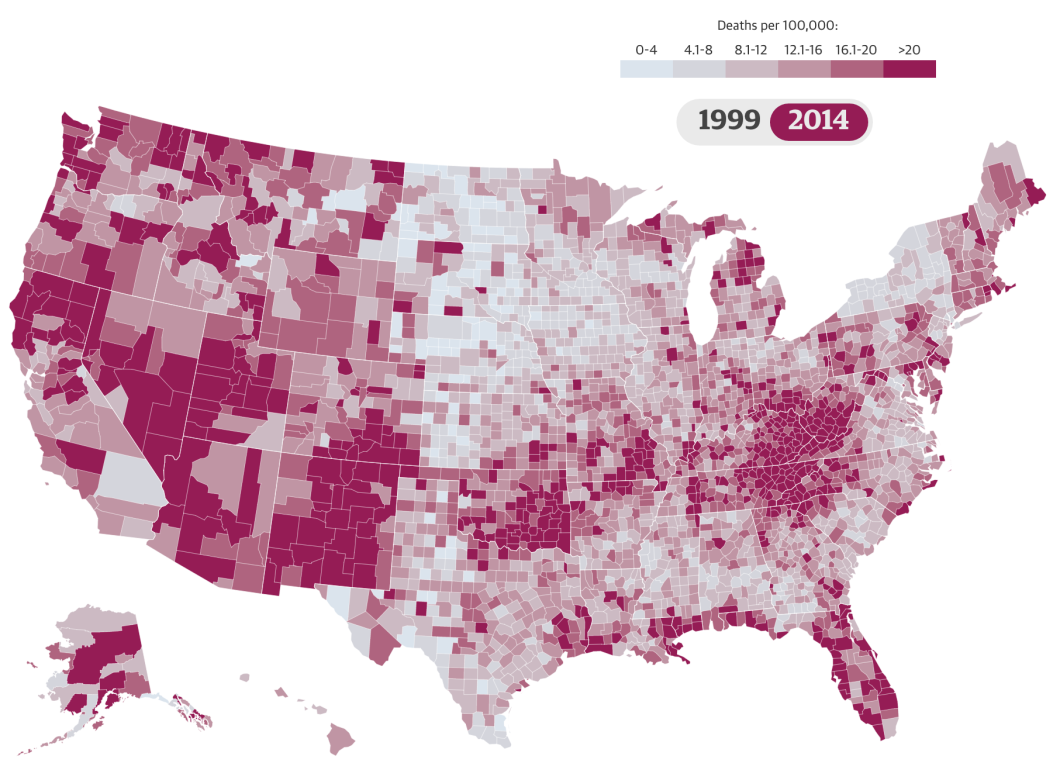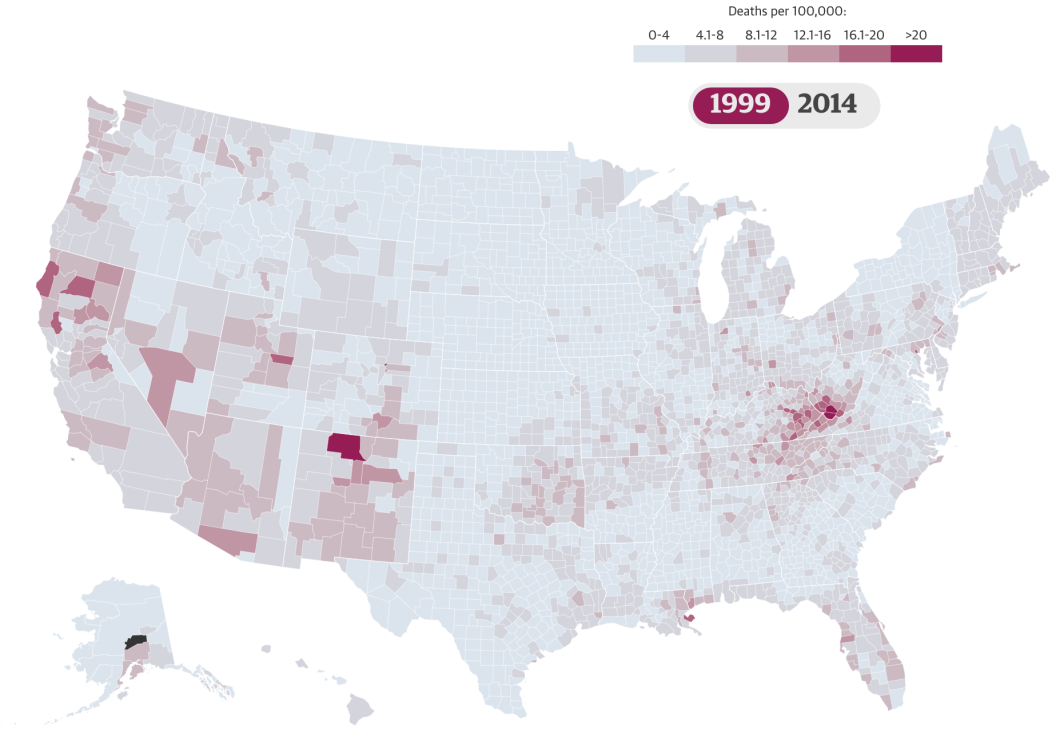In Denial About America’s Opioid Painkiller Problem? This Map Might Change Your Mind
If you think the Centers for Disease Control and Prevention is being alarmist by urging primary care physicians to stop prescribing so many opioid painkillers, or that the fact that 10% of doctors are writing more than 50% of the prescriptions for opioids is not a concrete indicator of a problem, then perhaps this map of overdose deaths in the U.S. will help to drive the point home.
Or rather, it’s two maps, put together by The Guardian using CDC data on overdose death rates in 1999 and 2014.
The fact is that drug overdoses now outnumber car crashes in terms of fatalities in the U.S., with 80 people dying every day just from opioid overdose. Yet two decades ago, drug deaths weren’t even on the radar for most Americans.
As you can see from the 1999 map, overdose deaths were rare in much of the country, with the exception of some high mortality rates in parts of Appalachia, the Southwest, and Northern California. Though even then, you could see the potential for explosion in OD deaths in the Pacific Northwest, New England, Florida, Oklahoma, and the Midwest.
At the time, drugs like OxyContin were new to the market and promising long-acting relief for sufferers of chronic pain. That made the drug more attractive to people who injured themselves doing work that puts a high demand on one’s body — mining, farming, manufacturing.
As recent reports have shown, OxyContin did not always live up to its promise to provide 12-hour pain relief, meaning some patients had to take the drug more frequently than prescribed.
People also realized that they could get around the extended-release aspect of these drugs by simply pulverizing the pills and ingesting all the contents at once. This resulted in a better high from the drug, but also increased the risk of dependency and overdose.
Fast-forward to 2014, and the map looks significantly darker, as the problem areas from 1999 have only gotten worse and spilled out to cover larger regions, and it’s now more rare to have a low overdose death rate:

Florida, which had some low-level areas of overdose deaths in 1999, became known on a national level as a place where scoring pain pills was easier than it should be. Major drug store chains were caught turning a blind eye to fake or questionable prescriptions.
In 2013, Walgreens paid $80 million to settle an investigation into its practices in the state, which included actively encouraging pharmacies to sell more opioid painkillers, resulting in stores selling several times the national average of drugs like oxycodone.
CVS, which was later hit with a $22 million for similar violations in Florida, was also caught filling bogus prescriptions in Rhode Island, one of the areas hit particularly hard by the increase in overdose deaths in New England.
As the Guardian notes, this region of the country had largely been in line with the national increase in overdose deaths until recent years, when states like New Hampshire and Massachusetts saw spikes from fatalities related to the powerful painkiller fentanyl.
Speaking of fentanyl, that drug is one of the concerns about the current efforts to further restrict access to prescription painkillers.
Alexander Walley, a physician and director of addiction consultation services at Boston Medical Center, tells the Guardian that “what we’re seeing now is that even as you reduce access to prescription opioids, you’re seeing an explosion of heroin use and heroin overdoses – and then there’s also now this ultra-potent substance [fentanyl] sold as heroin.”
And it’s not just fenantyl-spiked heroin that’s a problem. Addicts who can’t get their hands on prescription drugs through pharmacies are turning to drug dealers, who sometimes sell knock-offs containing drugs even more dangerous than the sought-after painkillers.
Health officials in several California counties recently warned against counterfeit versions of the painkiller Norco that have been spiked with fentanyl, resulting in dozens of people turning up in the hospital after overdosing in just a few weeks.
Want more consumer news? Visit our parent organization, Consumer Reports, for the latest on scams, recalls, and other consumer issues.


